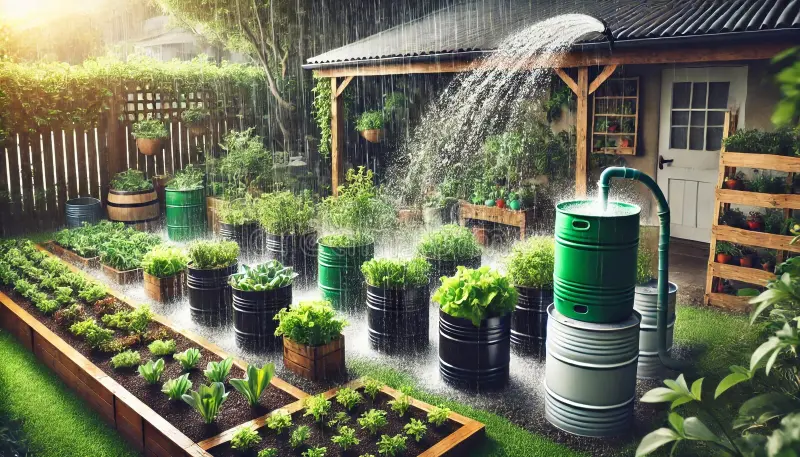
Sustainable gardening practices are becoming increasingly important as we face growing concerns about water conservation, climate change, and the environmental impact of traditional gardening methods. One of the most effective and eco-friendly ways to reduce water usage in your garden is by harnessing rainwater through a storage system. By collecting and utilizing rainwater, you can water your plants more efficiently, decrease your dependence on municipal water systems, and contribute to a healthier, more sustainable environment.
Why Choose Rainwater for Gardening?
Rainwater is often considered one of the best sources of irrigation for gardens due to its natural purity. Unlike tap water, which may contain chlorine, fluoride, and other chemicals, rainwater is free from these additives. This makes it gentler on plants, allowing them to thrive without the risk of chemical build-up. Additionally, rainwater is soft, which means it doesn’t leave mineral deposits that can harm plants over time. By collecting and using rainwater, you are also helping to reduce runoff and erosion, preventing pollutants from entering local waterways.
Setting Up a Rainwater Storage System
The first step in using rainwater for sustainable gardening is setting up a rainwater collection system. This typically involves a rainwater barrel or a more extensive rainwater harvesting system. Here’s how you can get started:
1. Choose a Collection Area: The most common method of collecting rainwater is through your roof. Water is directed off the roof and into a downspout, which then leads into a rainwater storage barrel or tank. Make sure your roof is clean and free from contaminants such as bird droppings or debris to ensure the rainwater remains clean.
2. Select the Right Storage Container: Rainwater barrels come in a variety of sizes and materials, such as plastic, wood, or metal. Choose a container that fits your space and meets your water needs. Ensure that it has a secure lid to prevent mosquitoes from breeding and debris from contaminating the water.
3. Install a First-Flush Diverter: To improve the quality of your rainwater, consider installing a first-flush diverter. This device ensures that the initial runoff, which may contain dirt, leaves, and other pollutants, is diverted away from the storage container. By allowing only clean water to enter the barrel, you help maintain the quality of the water.
4. Set Up a Filtering System: Depending on your needs, you may want to add a basic filtration system to your rainwater storage system. Filters can help remove any remaining debris and ensure that the water is safe for your plants. Simple mesh filters or finer, more advanced filtration systems can be installed before the water enters the barrel.
5. Connect a Hose or Irrigation System: Once your rainwater is stored, you can connect a hose or drip irrigation system to efficiently distribute the water to your garden. Drip irrigation is particularly useful because it delivers water directly to the roots of the plants, reducing evaporation and minimizing water waste.
Conclusion
Using rainwater storage for sustainable gardening is a simple yet powerful way to conserve water and promote eco-friendly practices in your garden. By collecting and using rainwater, you can reduce your water bills, improve plant health, and contribute to the conservation of this precious resource. With just a few modifications to your gardening routine, you can create a more sustainable, water-efficient landscape that benefits both your plants and the environment.


